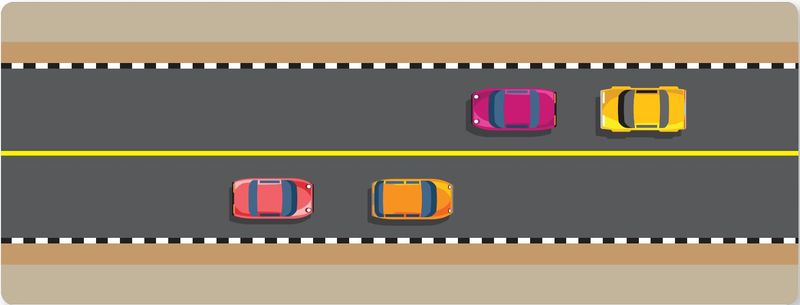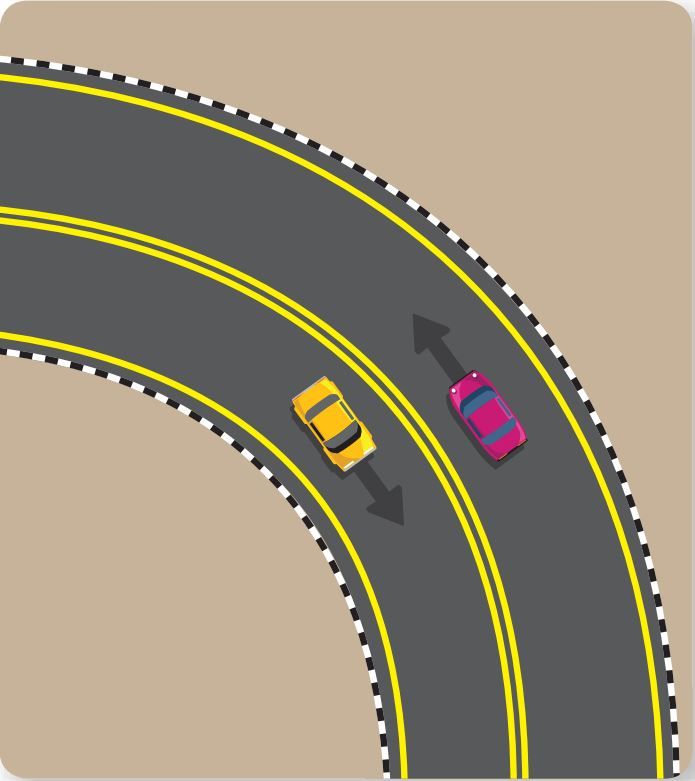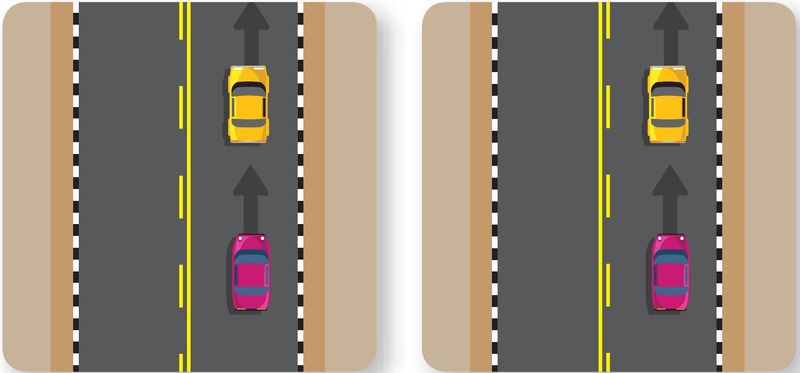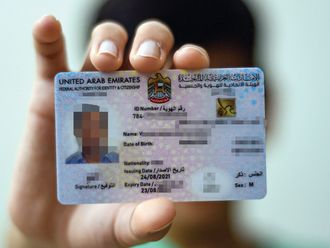
Dubai: Whether you are driving on a highway or a two-way street, there are certain rules that you should keep in mind when changing lanes, and particularly when trying to overtake a vehicle in front of you.
In a recent campaign launched by Ajman Police, motorists were warned against overtaking dangerously. The UAE traffic law mentions five fines related to overtaking that you should keep in mind:
1. Wrong overtaking - this refers to dangerously moving on to the road to overtake a car in front of you – Dh600 fine, 6 black points
2. Overtaking from the hard shoulder – Dh1,000 fine, 6 black points
3. Truck drivers overtaking, where overtaking is prohibited – Dh3,000 fine, one year licence suspension from the date of licence revocation
4. Heavy vehicle overtaking or entering prohibited roads or areas - Dh1,000 fine, 4 black points
5. Overtaking from a prohibited place - Dh600
How do I know I am not allowed to overtake at a certain place?
Looking at the lane markings will give you a clear idea of whether you are allowed to overtake or not. According to the Roads and Transport Authority’s (RTA) light motor vehicle handbook, these are the road lines you should watch out for:
1. No Passing Line
This is a solid line on the road as shown in the diagram below. You must not cross this line to overtake another vehicle or to turn (except in the case of an emergency).

2. Solid Lines – Single or Double
You must always keep to the right of these lines. You must not cross a double yellow line in the centre of the road. You will see these lines in areas that are particularly hazardous, like around a bend where you cannot see the traffic approaching from the opposite direction.

3. Double yellow lines, solid on one side and broken on the other
You can only cross these lines to overtake another vehicle, or to enter or leave the road, if the broken line is on your side. You must not cross these lines if the solid line is on your side.

How to safely change lanes
Whether you are changing lanes in general, or specifically to overtake a car in front of you, here are the rules you should keep in mind, as per the RTA handbook:
1. You must make sure that there is sufficient space in front of you to see whenever you intend to overtake a vehicle, a person, an animal or a traffic blockage.
2. Check the position of vehicles ahead of you, behind you and to your sides.
3. Signal early, as this warns other drivers and allows them to plan what they need to do.
Be aware that the driver in the vehicle in front of you may signal to change lanes at the same time. In this case, you should wait until the driver in front completes his move to another lane.
4. When you have checked that it is safe to change lanes make sure you check your mirrors and signal to the right or left giving sufficient warning to other drivers of your intentions.
5. Check your mirrors again.
6. Check your blind spot by doing a headcheck to the right or left. Remember that in making a headcheck to check your blind spot, do not take your eyes off the road ahead for more than a second.
7. Control your speed as you may need to maintain, increase or decrease your speed depending on the traffic conditions.
8. Steer smoothly and gradually into the new lane, as this allows other drivers to let you in.
9. Once you are completely in the new lane remember to check your mirrors again and stop giving the indicator.
• Do I really need to overtake?
• Will it make a difference to my journey if I just stay in my lane?
• Am I permitted by law to overtake?
• Will my overtaking cause other traffic to alter speed or position?
• Is it safe?
Source: RTA handbook
On the other hand, if someone is overtaking you, you must slow down and keep to the right, according to RTA.
“When overtaking, if you are not sure you have enough time, just wait. A few seconds or minutes could save your life. Make sure there is a clear space between you and the vehicle you have overtaken - allow at least a two to four second space. You need to be able to see both headlights of the vehicle you have overtaken in your rear vision mirror before starting to move back in,” the handbook states.
You may not overtake in the right lane. Wait until the vehicle in front has returned to the right lane and then overtake on the left.
2. When the movement of traffic in the opposite direction doesn’t allow you to proceed safely.
3. At intersections and roundabouts.
4. When vehicles stop due to movement of traffic obstruction or due to a stop sign.
5. On curves, crests of hills, slippery roads, next to pedestrians crossings and roads with solid long lines.
6. In places where the signs forbid drivers to overtake.











